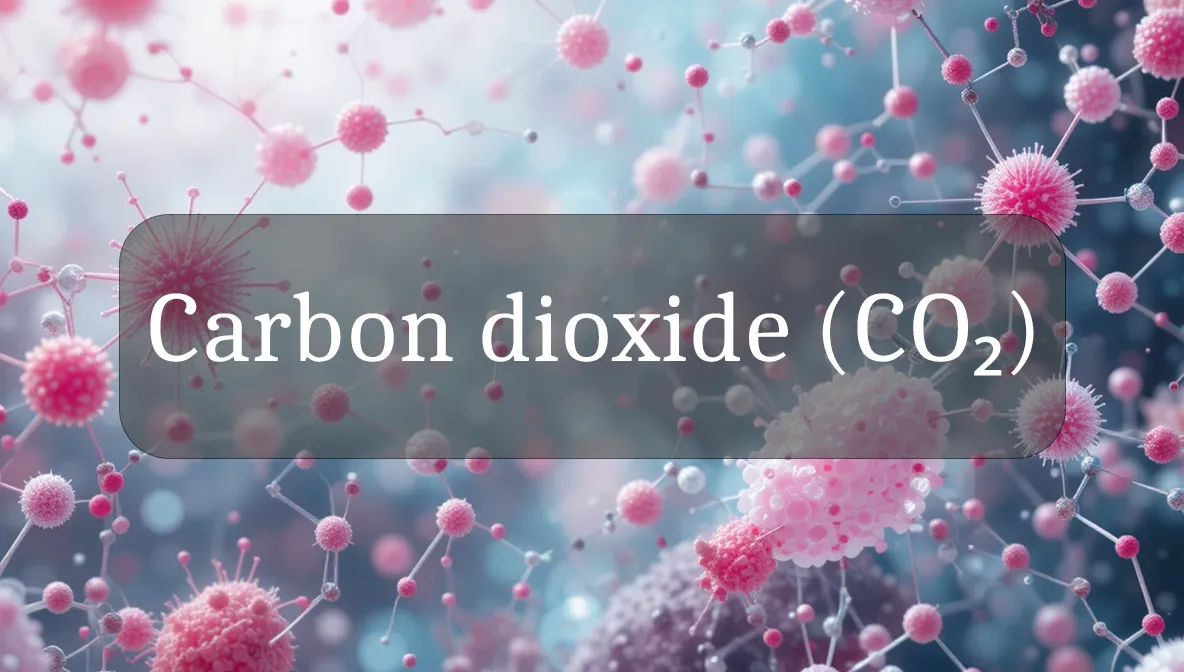Your Body’s Invisible Regulator
Carbon dioxide (CO2) might sound like something from a science class or environmental news, but it’s a tiny molecule with a huge role in your health. Far from being just a “waste gas,” CO2 is a key player in keeping your body balanced and running smoothly. Let’s explore what CO2 is, how it impacts your wellness, and practical ways to support its role in your daily life. This guide is crafted for health-conscious readers, using a friendly tone and optimized for SEO with keywords like “carbon dioxide health effects,” “CO2 in the body,” and “carbon dioxide balance.”
Chemical Identity and Type
CO2 is a simple molecule made of one carbon atom bonded to two oxygen atoms (CO2). It’s a colorless, odorless gas naturally produced when your cells “burn” food for energy. Think of CO2 as a byproduct of your body’s energy factory—it’s created when nutrients are turned into fuel. It’s not a nutrient or toxin but a vital signal for your body’s balance systems.
Biological Role and Benefits
CO2 is like a behind-the-scenes manager for your body’s vital processes. Here’s how it supports your health:
- Regulates Breathing: CO2 levels in your blood tell your brain when to breathe. When CO2 builds up, your brain signals your lungs to exhale it and take in fresh oxygen, keeping your breathing in rhythm during exercise or rest.
- Maintains Blood pH: CO2 teams up with water in your blood to form a mild acid (carbonic acid), acting like a buffer to keep your blood’s pH balanced—not too acidic or too alkaline. Stable pH is key for enzyme function and cell health.
- Supports Oxygen Delivery: CO2 helps oxygen move from your blood to tissues via the Bohr effect. Higher CO2 in active tissues (like muscles during a workout) signals red blood cells to release oxygen where it’s needed most.
- Promotes Relaxation: Balanced CO2 levels can calm your system by aiding blood vessel dilation, improving blood flow, and easing stress on your heart.
In short, CO2 isn’t just waste—it’s a critical signal for breathing, blood, and energy harmony.
Dietary or Natural Sources
Your body makes CO2 naturally through metabolism. Every time your cells break down carbs, fats, or proteins for energy (called cellular respiration), CO2 is produced. You don’t get CO2 from food or supplements, but these factors influence its production:
- Diet: Nutrient-rich foods like whole grains, healthy fats (e.g., avocados), and proteins (e.g., chicken) fuel energy production, generating CO2.
- Exercise: Physical activity ramps up metabolism, producing more CO2 as cells work harder.
- Environment: The air you breathe has about 0.04% CO2, but this doesn’t significantly affect your body’s levels. However, poorly ventilated spaces (like crowded rooms) can raise inhaled CO2, causing discomfort.
Signs of Imbalance or Dysfunction
Your body tightly controls CO2 levels, but imbalances can impact health. Watch for these signs:
- Low CO2 (Hypocapnia): Caused by hyperventilation (breathing too fast) from anxiety, stress, or high altitude. Symptoms include:
- Dizziness or lightheadedness
- Tingling in hands or feet
- Feeling “air hungry” or short of breath
- Muscle cramps or fatigue
- High CO2 (Hypercapnia): Occurs when CO2 builds up, often due to lung conditions (e.g., COPD), sleep apnea, or poor ventilation. Symptoms include:
- Confusion or drowsiness
- Headaches
- Rapid heartbeat
- Labored breathing
If these symptoms persist, consult a healthcare provider to check for conditions like lung disease or metabolic issues.
Supporting Optimal Levels or Function
Keeping CO2 levels balanced is about supporting your body’s natural processes. Try these practical tips:
- Practice Mindful Breathing: Slow, deep belly breathing (diaphragmatic breathing) for 5–10 minutes daily can stabilize CO2, especially if you’re stressed or anxious.
- Stay Active: Regular exercise like brisk walking or yoga (aim for 150 minutes of moderate activity weekly) boosts metabolism and lung function, supporting CO2 balance.
- Eat a Balanced Diet: Choose complex carbs (e.g., oats), healthy fats, and lean proteins to fuel steady energy production and natural CO2 levels.
- Ensure Good Ventilation: In stuffy spaces, open windows or use a fan to keep air fresh, preventing external CO2 buildup that can make you feel sluggish.
- Manage Stress: Chronic stress can lead to rapid breathing and low CO2. Try meditation or progressive muscle relaxation to keep breathing steady.
Safety, Interactions, and Precautions
CO2 is naturally managed by your body, but certain factors can disrupt its balance:
- Medical Conditions: Lung diseases (e.g., asthma, COPD), kidney issues, or metabolic disorders can affect CO2 regulation. Work with your doctor to monitor levels, often via blood tests (arterial blood gas analysis).
- Medications: Drugs like diuretics or sedatives may alter breathing or blood pH, impacting CO2. Discuss side effects with your healthcare provider.
- Environmental Risks: High CO2 in poorly ventilated spaces (e.g., crowded rooms or industrial settings) can cause headaches or fatigue. Avoid prolonged exposure.
- Breathing Exercises: While safe for most, overdoing techniques like breath-holding can disrupt CO2 balance. Start slowly and seek guidance if trying advanced methods like Buteyko breathing.
Fun Fact
Did you know CO2 helps you yawn? Yawning cools your brain by boosting oxygen and releasing CO2, acting like a natural thermostat to keep your head at the perfect temperature for clear thinking!
Citations
- National Institutes of Health (NIH). (n.d.). Acid-Base Balance and Blood pH.
- Mayo Clinic. (n.d.). Hypercapnia: Causes and Symptoms.
- Cleveland Clinic. (n.d.). Respiratory Alkalosis and Acidosis.
- World Health Organization (WHO). (n.d.). Indoor Air Quality and Ventilation.
- U.S. National Library of Medicine. (n.d.). Carbon Dioxide in Blood.

